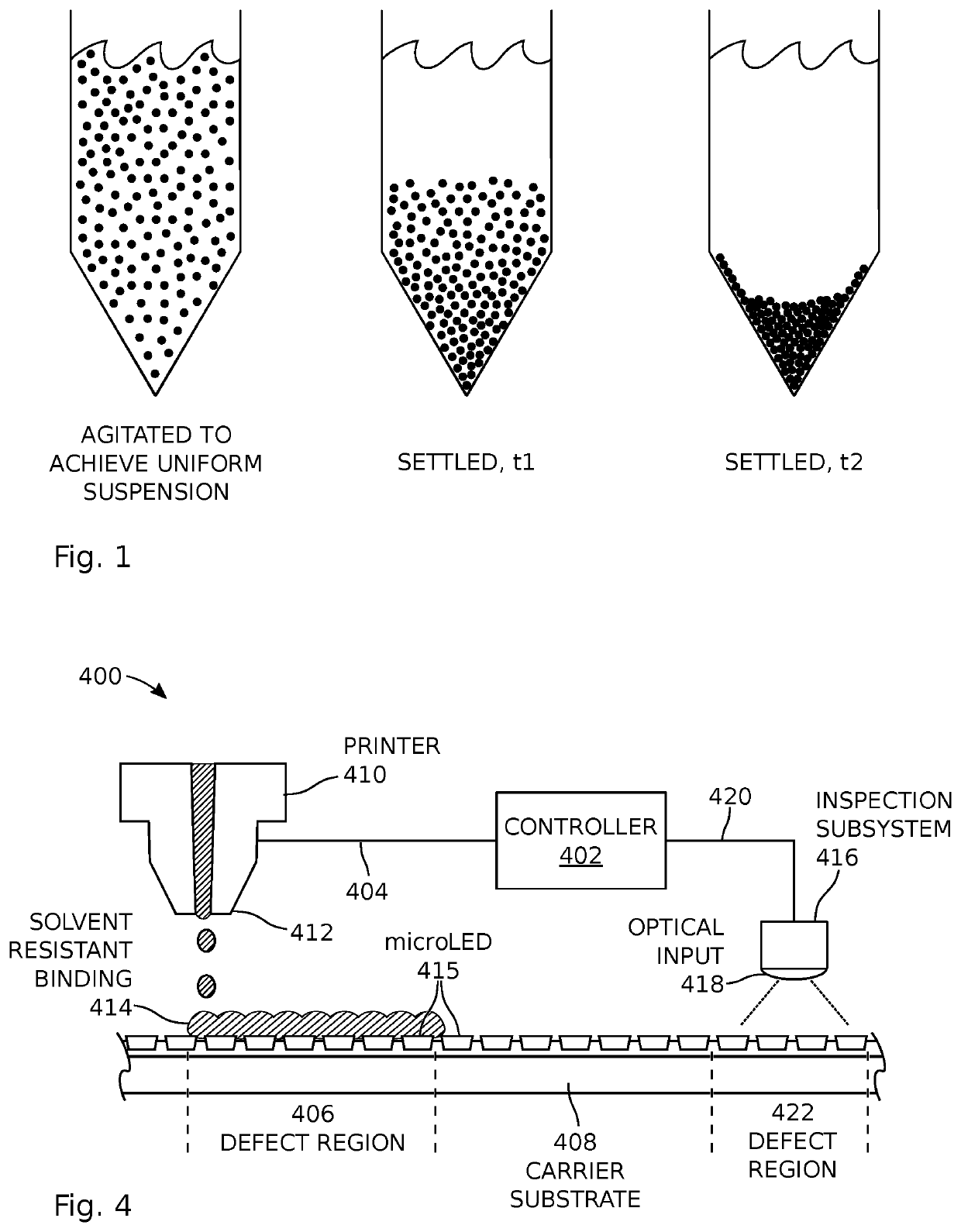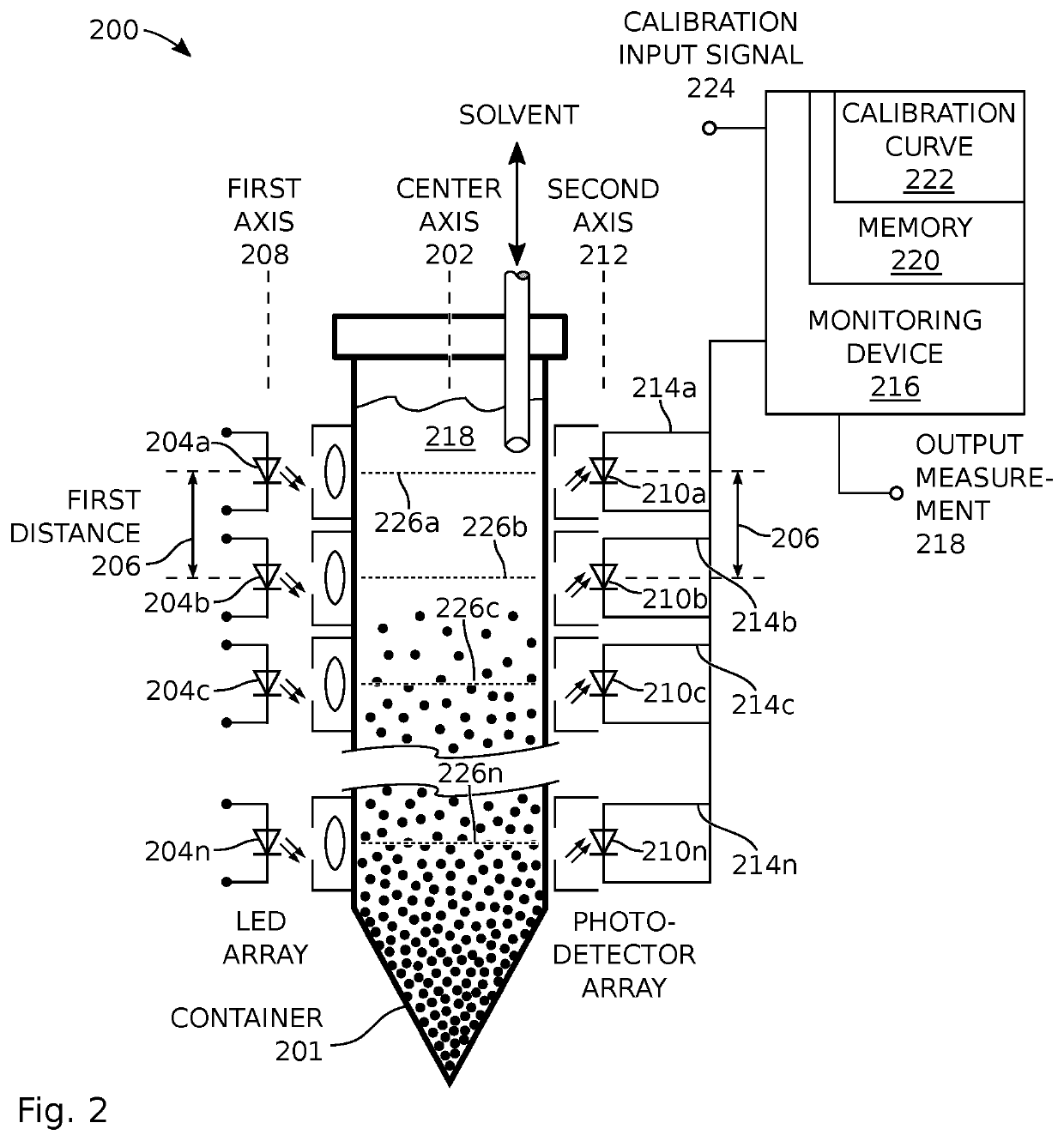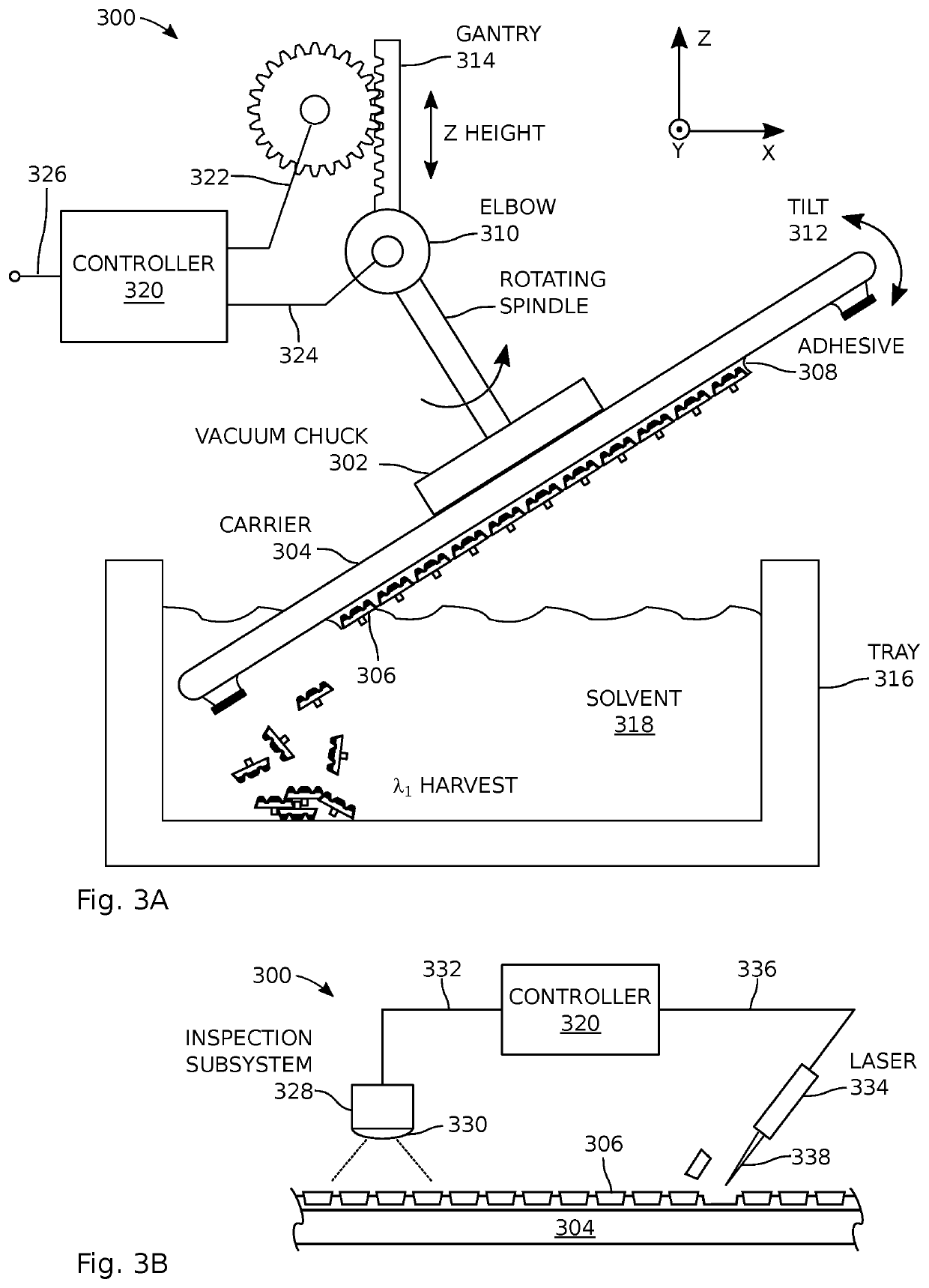System and Method for the Selective Harvest of Emissive Elements
a technology of selective harvesting and emissive elements, applied in semiconductor/solid-state device testing/measurement, instruments, material analysis, etc., can solve the problems of image burn-in, limited contrast ratio, and less than 4% efficiency of lcd display, and achieve the effect of minimizing damage and loss of microleds
- Summary
- Abstract
- Description
- Claims
- Application Information
AI Technical Summary
Benefits of technology
Problems solved by technology
Method used
Image
Examples
Embodiment Construction
[0054]FIG. 2 is a partial cross-sectional view of a system for characterizing a micro-light emitting diode (microLED) suspension. The system 200 comprises a transparent container 201 having a vertical center axis 202. A plurality of light emitting devices 204a through 204n (LED array) is shown with each light emitting device having a predetermined output light intensity, directed towards the center axis 202 of the container 200 and spaced a first predetermined distance 206 from each other along a vertical first axis 208 parallel to the center axis 202, where (n) is an integer greater than 1. A plurality of light detection devices 210a through 210n (photodetector array) is spaced the first predetermined distance 206 from each other along a vertical second axis 212 parallel to the center axis 202. The light detection devices 210a-210n each have an optical input directed towards a corresponding light emitting device output and an output, respectively on lines 214a through 214n, to prov...
PUM
 Login to View More
Login to View More Abstract
Description
Claims
Application Information
 Login to View More
Login to View More - R&D
- Intellectual Property
- Life Sciences
- Materials
- Tech Scout
- Unparalleled Data Quality
- Higher Quality Content
- 60% Fewer Hallucinations
Browse by: Latest US Patents, China's latest patents, Technical Efficacy Thesaurus, Application Domain, Technology Topic, Popular Technical Reports.
© 2025 PatSnap. All rights reserved.Legal|Privacy policy|Modern Slavery Act Transparency Statement|Sitemap|About US| Contact US: help@patsnap.com



